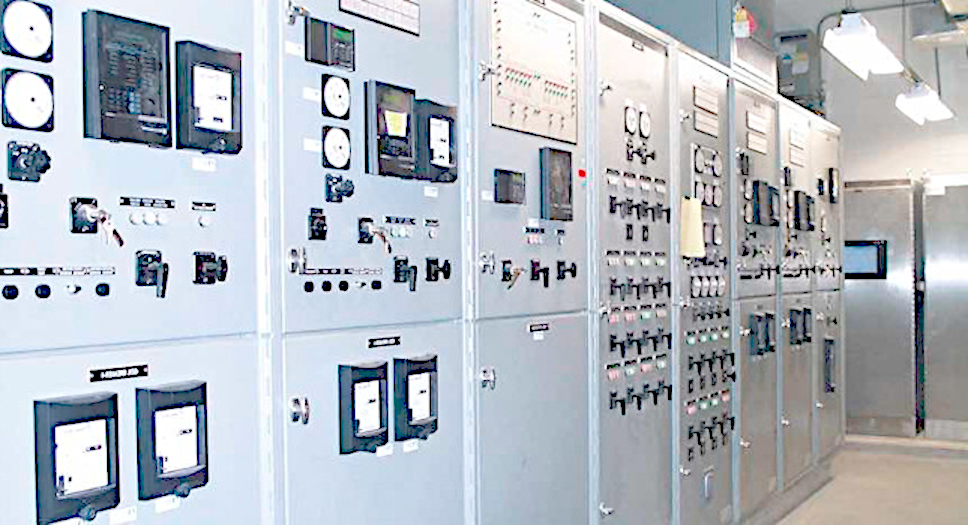Introduction
It is the Electrical Engineer's responsiblility to select electrical equipment. The choice between metal enclosed and metal-clad switchgear is a decision for the Electrical Engineer to make.
Metal-clad switchgear and metal-enclosed switchgear are both types of electrical distribution equipment used in power distribution and control systems, particularly in medium-voltage and high-voltage applications. While they serve similar purposes, they have some key differences in their design, construction and initial investment cost.
Design and Construction
Metal-clad switchgear typically consists of metal enclosures with separate compartments for various components, such as circuit breakers, busbars, relays, and control devices. These compartments are isolated from each other and often feature metal barriers between them to enhance safety and reduce the risk of arc flash incidents.
Metal-enclosed switchgear, on the other hand, features a single, metal enclosure that houses all the electrical components, including the circuit breakers, busbars, and control devices. The enclosure is typically sealed and compartmentalized, but the components are enclosed within a single outer housing.
Accessibility and Maintenance
Metal-clad switchgear is designed for ease of maintenance and accessibility to individual components. Each compartment is typically accessible from the front, and components can be removed or replaced without de-energizing the entire switchgear. This design allows for more convenient maintenance and troubleshooting.
Metal-enclosed switchgear is generally more compact and designed to be "maintenance-free." Access to individual components may be limited, and in some cases, maintenance may require de-energizing the entire switchgear assembly.
Arc-Resistance
Metal-clad switchgear is designed with a strong focus on arc-resistant features. The compartmentalization and barriers between sections help contain and mitigate the effects of internal arcing faults, making it safer for personnel working on or around the equipment.
Metal-enclosed switchgear may not have the same level of arc resistance, as it's often designed with a focus on compactness and space-saving, which can limit the effectiveness of arc flash mitigation measures.
Application and Size
Metal-clad switchgear is commonly used in medium-voltage and high-voltage applications, particularly where a high degree of safety and maintainability is required. It is suitable for larger installations with multiple functional units.
Metal-enclosed switchgear is often used in compact and space-constrained installations where maintenance is less frequent, and where the need for additional arc resistance features is limited. It is generally used in applications where a smaller footprint is desired.
Investment Cost
The cost difference between metal-clad switchgear and metal-enclosed switchgear can vary depending on several factors, including the specific design, features, and the supplier. However, in general terms, metal-enclosed switchgear is often more cost-effective than metal-clad switchgear for several reasons such as compact design, reduced maintenance requirements, smaller foot print,etc.
It is important to note that the specific cost difference between metal-clad and metal-enclosed switchgear can vary significantly based on factors like voltage rating, the number of compartments, features, and the manufacturer. Additionally, it is crucial to consider long-term operational and maintenance costs when assessing the overall cost of switchgear, as lower initial costs may be offset by higher maintenance expenses over time.
International Standards
Metal-clad switchgear and metal-enclosed switchgear are subject to various international and regional standards and regulations to ensure their safety, reliability, and performance in electrical distribution systems.
Some of the key standards that apply to these types of switchgear include:
- ANSI C37.20.1: Standard for Metal-Clad Switchgear
- ANSI C37.20.2: Standard for Metal-Clad Switchgear with Withdrawable Circuit Breakers
- ANSI C37.20.3: Standard for Metal-Enclosed Bus and Calculating Losses in Isolated-Phase Bus
- ANSI C37.20.7: Standard for Metal-Enclosed Bus and Calculating Losses in Metal-Enclosed Bus
- NEMA SG 4: Guide to Preparation of Metal-Clad Switchgear Control and Relay Panels
- NEMA 250: Enclosures for Electrical Equipment (NEMA Type)
- UL 1558: Metal-Enclosed Low-Voltage Power Circuit Breaker Switchgear
- UL 891: Standard for Switchboards
- UL 1066: Standard for Low-Voltage AC and DC Power Circuit Breakers Used in Enclosures
- National Electrical Code (NEC)
- Canadian Electrical Code (CEC)
- IEC 62271-200: High-voltage switchgear and controlgear - Part 200: AC metal-enclosed switchgear and controlgear for rated voltages above 1 kV and up to and including 52 kV
- IEC 62271-100: High-voltage switchgear and controlgear - Part 100: Alternating current circuit-breakers
- IEC 62271-203: High-voltage switchgear and controlgear - Part 203: Gas-insulated metal-enclosed switchgear for rated voltages above 52 kV
Summary
The choice between metal-clad and metal-enclosed switchgear depends on the specific application, safety requirements, and space constraints. Metal-clad switchgear offers more compartmentalization and enhanced safety features, while metal-enclosed switchgear is more compact and may be suitable for applications with less frequent maintenance needs.
Ultimately, the choice between metal-clad and metal-enclosed switchgear should consider the specific needs and constraints of your project, including budget, available space, safety requirements, and maintenance considerations. A detailed cost analysis and consultation with switchgear suppliers can help you make an informed decision based on your particular circumstances.
